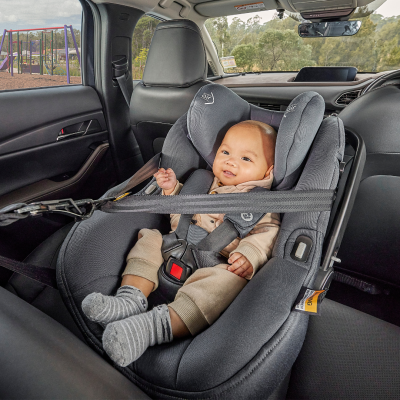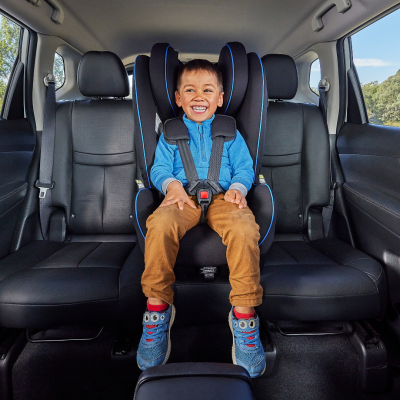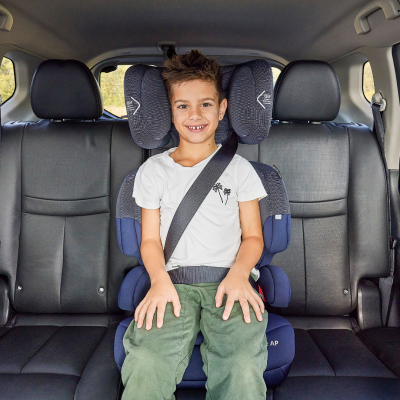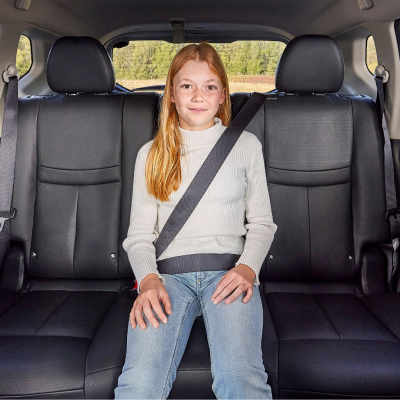Child car seats
Child car seats reduce injuries and deaths. Understand the rules you must follow, and how to choose and install a suitable approved car seat.
Child car seat rules
Children aged under 7 years must use an approved suitable child restraint when travelling in a vehicle. A child restraint is a forward‑facing or rear-facing child car seat (also referred to as a baby car seat or baby capsule), or a booster seat.
To be approved, child restraints must meet Australian/New Zealand Standard AS/NZS 1754.
Suitable child car restraint
The driver is responsible for children aged under 7 years being secured by an approved child restraint suitable for their age and size.
- Children up to the age of 6 months must use a rear-facing child car seat.
- Children aged between 6 months and 4 years must use either a rear-facing child car seat or a forward-facing child car seat with an inbuilt harness.
- Children aged between 4 and 7 years must use a forward‑facing child car seat with an inbuilt harness or an approved booster seat.
Children aged 7 years and over who are too small to use a seatbelt should use an approved booster seat or an anchored safety harness. The suggested minimum height for using a seatbelt is 145cm or taller.




Fitting child car seats
Child car seats must be properly fitted according to the manufacturer’s instructions. This includes adjusting the seat tightly and attaching it to an anchorage point designed for a child car seat.
It’s recommended that child car seats are fitted by an authorised restraint fitter or at an authorised restraint fitting station. For more information, see Authorised restraint fitting stations.
Fitting booster seats
Booster seats must be used with either a standard lap-and-sash type seatbelt or an approved child safety harness. Never use a booster seat with a lap seatbelt alone.
Booster seats heavier than 2kg must be anchored to an anchorage point.
Children in the front seat
Children aged under 4 years:
- must not sit in the front seat of a vehicle that has 2 or more rows of seats
- can sit in the front seat of a vehicle with only one row of seats, but must use an approved child car seat suitable for their age and size.
Children aged between 4 and 7 years must not sit in the front seat of a vehicle that has two or more rows of seats, unless the available seats in the back row are occupied by other children aged under 7 years. They must use an approved child car seat suitable for their age and size.
Never use a single seatbelt to restrain more than one person, it's illegal. Sharing a seatbelt puts both people at risk of being seriously injured or killed in a crash.
Babies or children must never share a seatbelt or ride on another person’s lap or share their seat.
Exemptions
Travelling in a tow truck
After a crash or vehicle breakdown, a child aged under 12 months can travel in a tow truck.
If a suitable child car seat is not available, they can sit on the lap of another passenger. If the tow truck has two or more rows of seats, they must sit in the back seat.
Travelling in a taxi
While travelling in a taxi:
- children up to the age of 6 months must use a rear-facing child car seat
- children aged between 6 and 12 months must use either a rear‑facing child car seat or a forward-facing child car seat with an inbuilt harness
- children aged over 12 months must use a booster seat or wear a properly adjusted and fastened seatbelt.
Rules for children in the front seat (see above) continue to apply. You can ask the taxi for a child car seat or booster seat when you book, or ask to use your own. All taxis must be fitted with a child restraint anchorage point.
Medical conditions and disability
Children aged under 7 years with a medical condition or disability can use an alternative child restraint designed for them. They must carry a certificate from a doctor saying they can use this restraint.
Penalties
If you drive with children aged under 16 years who are not using an approved suitable child restraint, you can get a fine and demerit points. Double demerit points also apply.